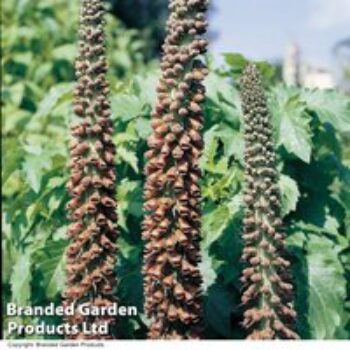- In 2024, Latin America continued facing chronic issues of deforestation, ecosystem contamination, violence, habitat loss and political turmoil.
- Changes brought on by presidential elections in several countries have not brought on significant changes for the environment, at least not yet, with effects still to be seen in the years to come.
- Increased criminal activity in the region remains a serious obstacle to conservation work, endangering local and Indigenous communities, while highlighting governments’ inability to tackle narco-trafficking and its associated consequences.
Throughout a year in which Latin America saw elections in six countries and prepared for the biodiversity COP16 in Colombia, the region continued its struggle with extreme weather events, criminal activity threatening ecosystems and development encroaching on communities and wildlife habitats. At the same time, community efforts toward conservation, environmental justice and implementation of nature-based solutions kept up. Below we selected several key stories we reported on last year – they are good opportunities to refresh one’s memory about what has happened, but also set our expectations for the issues carrying on into 2025.
Political change across the region
In El Salvador, the re-election of Nayib Bukele posed environmental concerns, as his agenda prioritizes development, security, and attracting foreign investments over the country’s natural assets. In 2017, El Salvador was the first country in the world to ban mining but fears that Bukele would reverse that ban have since become a reality.
In Panama, presidential race winner Jose Raul Mulino has stated he didn’t have plans to re-open the Cobre Panama mine, but his plans are also more focused on job development and infrastructure than on environmental issues. Last year, the government’s relocation of the island community of Gardi Sugdub – a first for the country – highlighted Panama’s tangible struggle with climate change impacts.

Mexico’s election of its first woman president, Claudia Sheinbaum, has brought hope that more of the country’s environmental issues will get attention from the government. Sheinbaum is the former mayor of Mexico City and an environmental scientist by trade. She co-authored the Intergovernmental Panel on Climate Change report that won the 2007 Nobel Peace Prize, yet her campaign has been light on rigorous environmental policy, some critics have said. As the successor of AMLO, her support of the controversial Tren Maya and oil giant Pemex has raised red flags about her commitment to conservation and the energy transition.
Venezuela’s electoral campaign, with Nicolas Maduro’s victory still highly contested, had little space for environmental issues, even though the country has plunged into a crisis so severe that many observers have called it an ecocide. Mining has torn through the Amazon Rainforest. A neglected oil industry has polluted the coast. Protected areas are plundered for their timber and exotic species. Funds for scientific research have all but dried up. Funds for park guards have dwindled, as well.
A year of wildfires and drought
Wildfires have scorched millions of hectares of forest across South America so far this year. From Bolivia to Brazil, Peru to Argentina, the continent has been gripped by one of its worst fire seasons in decades, with deforestation and drought fueling the flames.
Bolivia has been hit the hardest, with more than 7 million hectares (17 million acres) of forest and natural vegetation scorched by late September. This made 2024 Bolivia’s worst year for fires on record. There were three times more fires in Bolivia in 2024 than in previous years, devastating biodiversity and Indigenous territories.
Brazil, home to 60% of the Amazon, also faced extreme fire activity. In the Brazilian Pantanal, more than 1.3 million hectares (3.2 million acres) burned by October, marking one of the most destructive fire seasons in recent history.
Peru has also declared a state of emergency in six regions as fires spread across the country. By late September, the fires had killed 20 people, injured more than 160, and burned more than 12,300 hectares (30,400 acres) of natural vegetation, while severe drought in the Amazon left several Indigenous communities isolated. Meanwhile, Colombia reported 44,000 hectares (109,000 acres) destroyed by fires in September alone. In Mexico, heat waves have also had severe impacts: by August 2024, the country had recorded at least 125 heat-related deaths and 2,308 cases of heat stroke, along with power outages, wildfires, and mass die-offs of threatened howler monkeys.

In early 2024, Venezuela experienced record-breaking fires. Apart from the highest number of fires in any January and February for the last two decades, wildfires continued into early May, devastating national parks and affecting the capital of Caracas. To that point, up to 2 million hectares (4.94 million acres) of land appear to have already burned, experts estimated.
Mining, energy and infrastructure projects expanded
In Bolivia, lithium extraction has brought on new issues for communities neighboring the industry. In Salar de Uyuni, a lithium plant opened in 2023 has been using untested equipment and has been possibly mismanaging its use of freshwater, raising concerns for residents about whether the Bolivian government can responsibly manage the rapid growth of the industry.
In Nicaragua, despite US sanctions, harmful mining has continued unabated. Between 2021 and 2023, the amount of Nicaraguan land concessioned for mining more than doubled, from 923,681 hectares (2,282,465 acres) to 1.8 million hectares (4,447,896 acres), according to the Ministry of Energy and Mines. Mining concessions now take up around 15% of the country’s total land area.
In Colombia, approval of the $420.4 million Alacrán mining project in northern Colombia has alarmed residents, who say they might lose their food and drinking water to unregulated pollution, causing them to relocate to other parts of the country. In Guyana, a series of ongoing road projects traveling over 500 kilometers (310 miles) from the capital of Georgetown to the city of Lethem, in the south, are supposed to improve access to more rural parts of Guyana while facilitating international trade, most notably with Brazil. But the project also crosses sensitive wetlands and Indigenous communities, raising concerns about how the government will manage future development there.

Earlier in the year, Mongabay reporter Maxwell Radwin and videographer Caitlin Cooper embarked on a journey aboard the Tren Maya, traveling from Cancún to Palenque and back, on a mission to uncover critical issues associated with the rail project, including impacts on communities and ecosystems.
Criminality encroaches on ecosystems
In Ecuador, an investigation by Mongabay and Codigo Vidrio found that for the last seven years, the Los Lobos criminal group has become deeply entrenched in illegal gold mining across all of the country’s provinces, taking over the mineral’s supply chain. The group that has entered even protected areas, has spread fear among local and Indigenous communities.
The Maya Biosphere Reserve, which stretches 2.2 million hectares (5.3 million acres) across northern Guatemala, has seen a wave of land invasions in 2024 in areas that have historically not faced threats of colonization. As new trails open up and fires spread, officials have raised concerns not just about deforestation but about potentially losing control of the area altogether.
In Colombia, the Chinese-owned Buritica gold mine lost control over 60% of its operations as its tunnels have been invaded by informal miners associated with Colombia’s largest criminal armed group, the Gaitanista Army of Colombia (EGC), also known as the Gulf Clan. Armed groups have increasingly gained power in the country: one report found that one of Colombia’s biggest active FARC dissident groups, the Central Armed Command (EMC), controls much of the Amazon rainforest in the departments of Guaviare, Meta and Caquetá.

In the Peruvian Amazon, cocaine has gained more ground. According to official data from MAAP, the surface area of coca production in Peru is increasing, particularly in the central Peruvian Amazon, along the Andes Mountains in the regions of Ucayali and Huánuco, leading to further threats and killings of Indigenous leaders. At the same time, experts have warned that organizations associated with the drug trade have diversified into mining, logging and land-grabbing enterprises, redrawing the map of criminal networks in Latin America.
Green finance has also continued stirring controversy. In early 2024, a Mongabay investigation revealed that several companies registered in Latin American countries claiming to have U.N. endorsement have persuaded Indigenous communities to hand over the economic rights to their forests for decades to come. Indigenous communities in Peru, Bolivia and Panama were promised jobs and local development projects in exchange for putting on the market more than 9.5 million hectares (23.5 million acres) of forests. The U.N. entities cited by the companies have rejected any involvement.
Conservation efforts carry on, despite obstacles
While Latin America might be battling many chronic issues, it still abounds in stories about conservation successes and new solutions to older problems. In Beni, Bolivia, a new approach to ranching has succeeded in bringing more sustainable practices and helping regenerate native grasses in the local savannas. In Peru, conservationists have come together to help protect the critically endangered Lima leaf-toed gecko (Phyllodactylus sentosus), which lives in Lima’s archaeological sites, while in Iquitos, communities are struggling to protect turtle species from illegal trade and local culinary traditions.

Research has shown that in Ecuador community-led conservation initiatives were more effective in curbing páramo loss than state-protected areas, while in Guyana, local Indigenous communities have set up a conservation zone for the rare red siskin (Spinus cucullata) finch to protect it from illegal trade and habitat loss.
Banner image: Mist rising from the Amazon rainforest at dawn. Photo by Rhett A. Butler for Mongabay.








